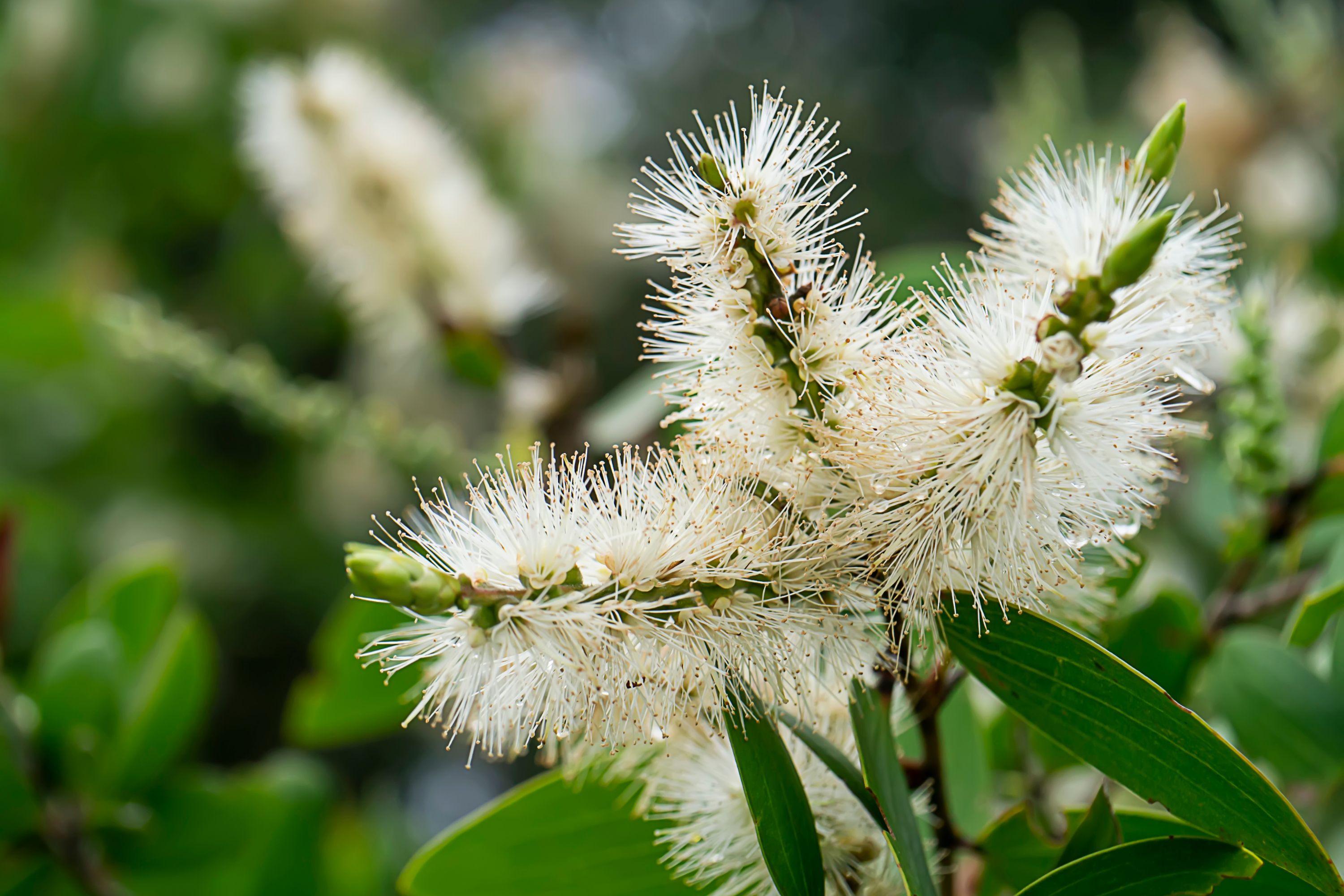Broad-leaved paperbark
(Melaleuca quinquenervia)

Description
Melaleuca quinquenervia, commonly known as the broad-leaved paperbark, paper bark tea tree, punk tree or niaouli, is a small- to medium-sized tree of the myrtle family, Myrtaceae. It grows as a spreading tree up to 20 m (70 ft) tall, with its trunk covered by a white, beige and grey thick papery bark. The grey-green leaves are egg-shaped, and cream or white bottlebrush-like flowers appear from late spring to autumn. It was first formally described in 1797 by the Spanish naturalist Antonio José Cavanilles. Native to New Caledonia, Papua New Guinea and coastal eastern Australia, from Botany Bay in New South Wales northwards into Queensland, M. quinquenervia grows in swamps, on floodplains and near rivers and estuaries, often on silty soil. It has become naturalised in the Everglades in Florida, where it is considered a serious weed by the USDA. Melaleuca quinquenervia is a small to medium sized, spreading tree which usually grows to a height of 8–15 m (30–50 ft) high and a spread of 5–10 m (20–30 ft) but is sometimes as tall 25 m (80 ft). Young growth is hairy with long and short, soft hairs. The leaves are arranged alternately and are flat, leathery, lance-shaped to egg-shaped, dull or grey-green, 55–120 mm (2–5 inches) long and 10–31 mm (0.4–1 inch) wide, three to eight times as long as wide. The flowers are arranged in spikes on the ends of branches which continue to grow after flowering, sometimes also in the upper leaf axils. The spikes contain 5 to 18 groups of flowers in threes and are up to 40 mm (2 in) in diameter and 20–50 mm (0.8–2 in) long. The petals are about 3 mm (0.1 in) long and fall off as the flower ages. The stamens are white, cream-coloured or greenish and are arranged in 5 bundles around the flower, with 5 to 10 stamens per bundle. Flowering occurs from spring to early autumn, September to March in Australia. Flowering is followed by fruit which are woody, broadly cylindrical capsules, 2.5–4 mm (0.1–0.2 in) long and clustered, spike-like along the branches. Each capsule contains many tiny seeds which are released annually. In Australia, Melaleuca quinquenervia occurs along the east coast, from Cape York in Queensland to Botany Bay in New South Wales. It grows in seasonally inundated plains and swamps, along estuary margins and is often the dominant species.
Taxonomic tree:







